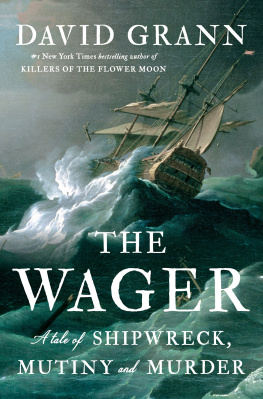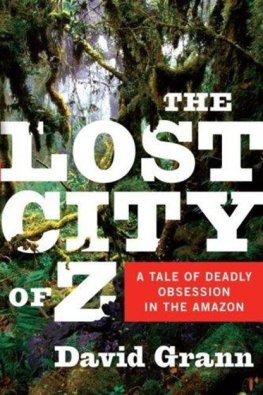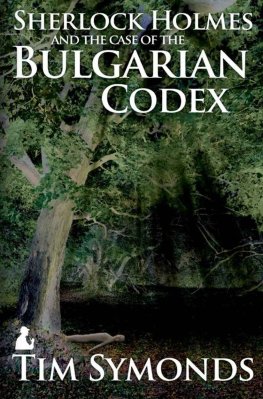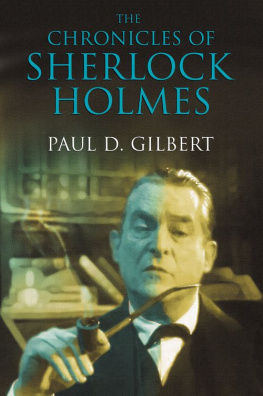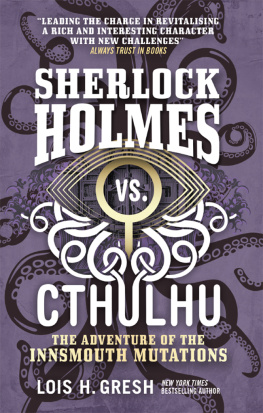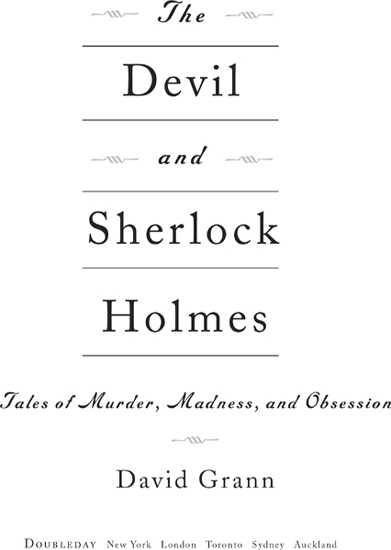R eporting, like detective work, is a process of elimination. It requires that you gather and probe innumerable versions of a story until, to borrow a phrase from Sherlock Holmes, the one which remains must be the truth.
Although Holmes is the subject of just one of the stories in this collection, about the curious death of the worlds foremost Holmes expert, all twelve contain elements of intrigue. Many of the protagonists are sleuths: a Polish detective trying to determine whether an author planted clues to a real murder in his postmodern novel; scientists who are stalking a sea monster; a con man who suddenly suspects that he may be the one who is being conned. Even the stories that seem cut from a different cloth deal in mystery of a kind: the secret world of sandhogs digging water tunnels under New York City, or the riddle of an aging but ageless baseball star.
Unlike the adventures of Sherlock Holmes, these tales are all true. The protagonists are mortal: as with Dr. Watson, they can observe, but they dont necessarily see. Pieces of the puzzle often remain elusive. Their stories do not always end happily. Some of the characters are driven to deception and murder. Others go mad.
Part of Holmess appeal is that he restores order to a bewildering universe. But it is the messiness of life, and the human struggle to make sense of it, that drew me to the subjects in this collection. As Holmes once conceded to Dr. Watson, If we could fly out of that window hand in hand, hover over this great city, gently remove the roofs, and peep in at the queer things which are going on, the strange coincidences, the plannings, the cross-purposes, the wonderful chains of events, working through generations, and leading to the most outr results, it would make all fiction with its conventionalities and foreseen conclusions most stale and unprofitable. When I began investigating these stories, I knew almost nothing about them. Many originated from little more than a tantalizing hint: a tip from a friend, a reference buried in a news brief. While I tried to unearth the facts and reveal the hidden narrative, I occasionally found myself baffled by a clue or a missing piece of evidence. Yet in the end these stories seemed to provide at least glimpses of the human condition, and why some people devote themselves to good and others to evil. As Holmes put it, Life is infinitely stranger than anything which the mind of man could invent.
Part One

Any truth is better
than indefinite doubt.
S HERLOCK H OLMES, in The Yellow Face

Mysterious Circumstances

THE STRANGE DEATH
OF A SHERLOCK
HOLMES FANATIC

Richard Lancelyn Green, the worlds foremost expert on Sherlock Holmes, believed that he had finally solved the case of the missing papers. Over the past two decades, he had been looking for a trove of letters, diary entries, and manuscripts written by Sir Arthur Conan Doyle, the creator of Holmes. The archive was estimated to be worth nearly four million dollars, and was said by some to carry a deadly curse, like the one in the most famous Holmes story, The Hound of the Baskervilles.
The papers had disappeared after Conan Doyle died, in 1930, and without them no one had been able to write a definitive biographya task that Green was determined to complete. Many scholars feared that the archive had been discarded or destroyed; as the London Times noted, its whereabouts had become a mystery as tantalizing as any to unfold at 221B Baker Street, the fictional den of Holmes and his fellow-sleuth, Dr. Watson.
Not long after Green launched his investigation, he discovered that one of Conan Doyles five children, Adrian, had, with the other heirs agreement, stashed the papers in a locked room of a chteau that he owned in Switzerland. Green then learned that Adrian had spirited some of the papers out of the chteau without his siblings knowledge, hoping to sell them to collectors. In the midst of this scheme, he died of a heart attackgiving rise to the legend of the curse. After Adrians death, the papers apparently vanished. And whenever Green tried to probe further he found himself caught in an impenetrable web of heirsincluding a self-styled Russian princesswho seemed to have deceived and double-crossed one another in their efforts to control the archive.
For years, Green continued to sort through evidence and interview relatives, until one day the muddled trail led to Londonand the doorstep of Jean Conan Doyle, the youngest of the authors children. Tall and elegant, with silver hair, she was an imposing woman in her late sixties. (Something very strong and forceful seems to be at the back of that wee body, her father had written of Jean when she was five. Her will is tremendous.) Whereas her brother Adrian had been kicked out of the British Navy for insubordination, and her elder brother Denis was a playboy who had sat out the Second World War in America, she had become an officer in the Royal Air Force, and was honored, in 1963, as a Dame Commander of the Order of the British Empire.
She invited Green into her flat, where a portrait of her father, with his walrus mustache, hung near the fireplace. Green had almost as great an interest in her father as she did, and she began sharing her memories, as well as family photographs. She asked him to return, and one day, Green later told friends, she showed him some boxes that had been stored in a London solicitors office. Peering inside them, he said, he had glimpsed part of the archive. Dame Jean informed him that, because of an ongoing family dispute, she couldnt yet allow him to read the papers, but she said that she intended to bequeath nearly all of them to the British Library, so that scholars could finally examine them. After she died, in 1997, Green eagerly awaited their transferbut nothing happened.
Then, in March, 2004, Green opened the London Sunday Times and was shocked to read that the lost archive had turned up at Christies auction house and was to be sold, in May, for millions of dollars by three of Conan Doyles distant relatives; instead of going to the British Library, the contents would be scattered among private collectors around the world, who might keep them inaccessible to scholars. Green was sure that a mistake had been made, and hurried to Christies to inspect the materials. Upon his return, he told friends that he was certain that many of the papers were the same as those he had uncovered. Whats more, he alleged, they had been stolenand he had proof.


